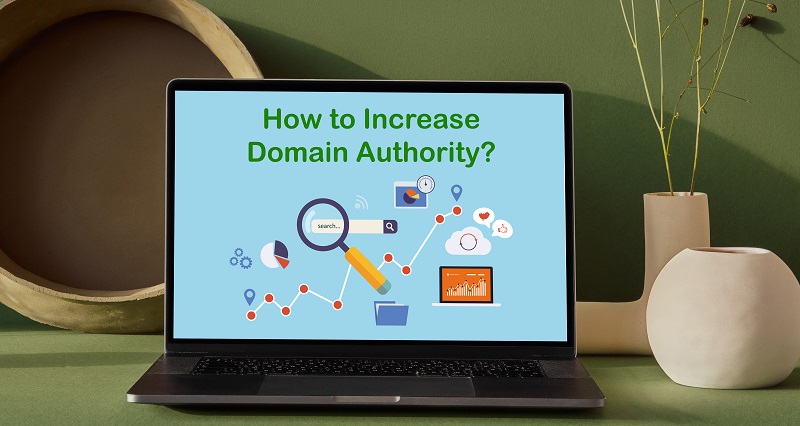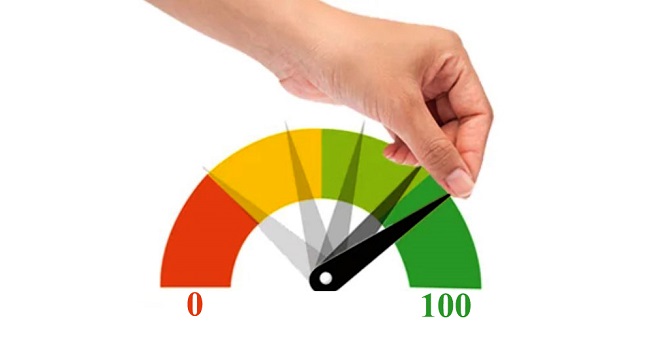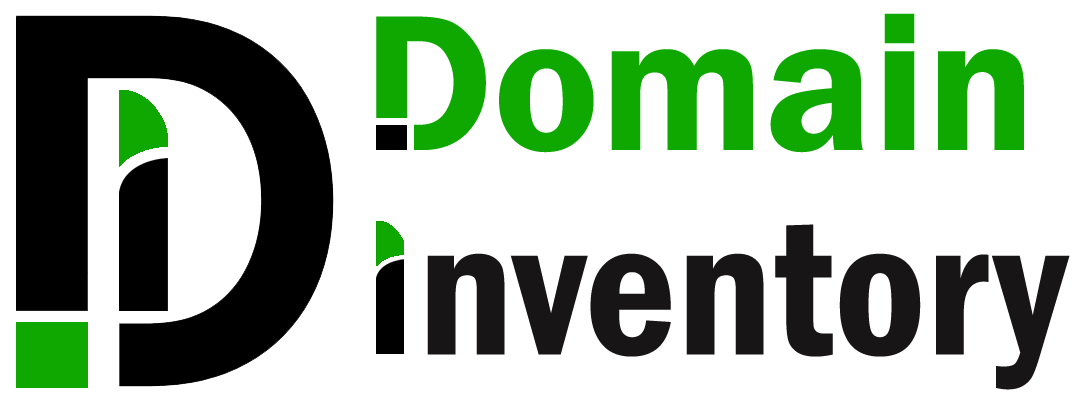Domain Authority (DA) is a metric that measures the strength and relevance of a website’s domain name. It is an important factor that determines how well a website will rank in search engines, which can ultimately impact its online visibility and traffic. A higher domain authority score indicates that a website has a better chance of ranking higher in search engine results pages (SERPs) and attracting more organic traffic. Increasing your domain authority is crucial if you want to improve your website’s search engine ranking and increase your online visibility. Improving domain authority requires a combination of technical and content-based strategies that can help increase the credibility and relevance of a website’s domain.
While building domain authority is not an overnight process, there are several strategies you can implement to improve it over time. In this blog post, we’ll take a closer look at what domain authority is, why it’s important, and provide you with actionable tips on how to increase domain authority. Whether you’re an online business owner, a blogger, or a digital marketer, the information in this blog post will help you optimize your website for higher domain authority and better search engine visibility.
What is Domain Authority?

Domain Authority is a search engine ranking score developed by Moz, a leading provider of SEO software and tools. It is a prediction of how well a website will perform in search engine rankings, based on a number of different factors. DA is measured on a scale from 0 to 100, with higher scores indicating a greater likelihood of ranking well on search engine results pages (SERPs).
The primary factors that contribute to a website’s DA include the number and quality of inbound links pointing to the site, the age and authority of the domain, the quality and relevance of the website’s content, and other technical factors such as website speed, mobile responsiveness, and security.
The number and quality of backlinks to a website are particularly important for determining its DA. Backlinks are links from other websites that point to a particular website. The quality of a backlink is determined by a number of factors, including the authority and relevance of the linking site, the anchor text used in the link, and the context in which the link is placed.
In general, a website with a higher number of high-quality backlinks from authoritative websites is more likely to have a higher DA than a website with fewer or lower-quality backlinks.
While DA is not a direct ranking factor used by search engines like Google, it can be useful for SEO professionals and website owners to gauge the relative strength of their website’s backlink profile and overall SEO efforts compared to their competitors.
It’s important to note that DA is just one of many factors that can impact a website’s search engine rankings. Other important factors include the relevance and quality of the website’s content, the use of relevant keywords, the website’s user experience, and technical factors such as website speed and mobile-friendliness.
How to Increase Domain Authority
Domain Authority is based on a number of factors, many of which are related to the strength of your ‘backlink profile,’ as we discussed earlier. This section will help you raise your DA and profile visibility.
1. Perform a “Backlink Audit” to Identify and Discard Inappropriate Links
When other websites link back to yours, this is known as backlinking. An audit of your site’s backlinks, or “backlink profile,” is the method by which you evaluate the quality of those links. Examining the credibility of your backlinks is an important part of any audit.
Bad quality links can be found in spam comments, on sites with a questionable reputation, and in certain link directories. Sites with these kinds of links receive lower rankings from Google’s algorithm. After conducting a backlink audit, it is recommended that you remove or disavow any low-quality links that were discovered. However, submitting to a few select directories could yield positive results in search engine optimization.
First, you’ll need to examine your backlink profile using Google Search Console or another tool. Your profile will display an inventory of your backlinks and related data like linking domains and anchor text.
Links from questionable sources or those that break the law, as well as anchor text that doesn’t relate to the link’s destination, are two red flags. While time-consuming, checking each link for functionality and spam potential is worthwhile. However, automated backlink analysis tools could be better and may miss some important links.
Once you’ve compiled a list of your harmful backlinks, you can approach the hosts of those sites and request that they remove the links. If they don’t reply or comply, you can disavow the links to have search engines disregard them.
2. Boost Traffic to Your Site by Creating High-Quality Backlinks
The opposite of removing harmful backlinks is creating new, beneficial ones. The opposite is also true; high-quality backlinks from sites with a higher DA than yours can boost your position in search engine results pages.
When it comes to backlinks, there are a few different approaches to take, but not all of them produce the best results. Your SEO and DA will suffer if you buy or sell links, or if you submit your site to poor-quality directories.
Building your link profile can be done quickly and easily through internal linking, or linking to your very own content. Link building can also be accomplished by guest blogging on some other sites and asking influential people to review your goods and services.
When constructing a link profile, it is important to note that not all links are created equal. Links with the “dofollow” attribute will be counted by search engines when calculating page ranks, while nofollow links (and disavowed links) will not.
If you’re going to use guest posting or influencer partnerships to increase your site’s backlink profile, you’ll want to make sure that the other site is linking to you with dofollow links. If you use nofollow links, your efforts will be in vain because they have no effect on your search engine optimization or domain authority.
3. Produce Captivating content to promote organic link building
In order to create a solid backlink profile, organic link building is the best strategy. This happens when other websites automatically link to yours. Someone finds your site because of the quality of its content and decides to link to it on their own accord.
To accomplish this, you must develop useful information that others will want to share or use as a resource and link to. Given the diversity of readers’ preferences, “high-quality content” is a vague concept. Nevertheless, a few characteristics are shared by more shareable works online.
First, think about writing blog posts or other extended pieces on topics that interest your target demographic. Well-written blog posts and articles can serve as resources for other bloggers, or readers can share them for educational or amusement value.
Posting relevant images helps break up blocks of text and keeps readers interested. By compressing your image files and including “alt” text, you can ensure they won’t slow down your site and that everyone visiting it can view them.
A compelling Call to Action (CTA) can entice site visitors to read more of your content and convert them into paying customers or email subscribers. Users are more likely to complete an action if it is easy to do so.
Last but not least, remember the value of on-page SEO. Keyword usage and page slugs may seem insignificant compared to the massive amount of off-the-scenes SEO work you’ll need to do.
4. Avoid Losing Users by Making Your Pages Accessible
Broken backlinks can cause users to land on a 404 page when they try to visit the linked resource. There are many potential causes for this to occur, including but not limited to a change in the page’s name or URL or the page’s relocation or deletion.
Websites with broken links are doomed to fail. Having a broken link on your site means potential customers won’t be redirected there. In most cases, this is less work than constructing brand-new high-quality links, and it can significantly boost your backlink profile and DA quickly.
Similarly to the first tactic, performing a backlink audit can help you discover any external links that no longer work on your site. Most link analysis tools, including Google Search Console, will flag any broken links on your site. Think about checking for broken internal links and fixing them as well.
After compiling a list of your broken links, you should approach the sites where they appear and request that they replace your links with new, functional ones. You can share the updated link if you have updated a URL. Conversely, if you removed the page, you could offer to share a link to a similar, live page.
If that doesn’t work, you can always reroute the links that don’t work. Visitors who click on a broken link will be redirected to the intended destination, and the DA of your site will consider the broken link. A backlink from a broken link will still be counted positively because of this.
5. Use Social Media to Promote Your Site
Having a large following on social media won’t help your SEO because it’s not a factor in rankings. A social media presence such as a Facebook page, Instagram account, or Twitter handle alone will not improve your search engine rankings or domain authority (DA). On the other hand, social media has other SEO benefits.
Building backlinks, promoting your brand, and reaching a wider audience are all possible thanks to social media. Your About section, posts, and collaboration with thought leaders can all serve as entry points for potential visitors to your site.
Brand promotion opportunities increase in proportion to the scope of your online presence. You can do this on your own, and regular site visitors will often do as well. In order to increase your site’s traffic, social media interaction is essential.
When more people visit your site, they are more likely to link to you organically as they spread the word about your great content. Organic inbound links are of a higher quality and are better for SEO. They’ll also boost your DA and clean up your link profile.
Scheduling posts in advance is the most convenient way to maintain a social media profile. This can be done directly in your posts on some sites, like Facebook. For others, scheduling posts ahead of time requires a social media management platform like Hootsuite or Later.
How to Check Domain Authority

Domain Authority (DA) is a metric developed by Moz that predicts how well a website will rank on search engine results pages (SERPs). It is calculated based on several factors, including the number and quality of backlinks to the website.
Steps to Check Domain Authority in MOZ
To check a website’s Domain Authority, you can use Moz’s Link Explorer tool, which provides both free and paid options. Here are the steps to check the DA of a website using Moz’s Link Explorer:
- Go to https://moz.com/link-explorer
- Enter the URL of the website you want to check in the search box.
- Click on the “Search” button.
- On the next page, you will see the Domain Authority (DA) score of the website, as well as other metrics such as Page Authority (PA), the number of linking domains, and the total number of inbound links.
Steps to Check Domain Authority in ahrefs
To check the domain authority (DA) of a website in Ahrefs, follow these steps:
- Go to Ahrefs website (www.ahrefs.com) and log in to your account.
- On the dashboard, click on the “Site Explorer” option from the top menu.
- Enter the domain or URL you want to check the domain authority for in the search bar and hit enter.
- Once the report loads, you will see the Domain Rating (DR) metric, which is Ahrefs’ version of domain authority, in the top row of the report.
- The DR score ranges from 0 to 100, with higher scores indicating a stronger website.
- On the same report, you can also see other important metrics like backlinks, referring domains, organic traffic, and more.
Note that Ahrefs updates their data frequently, so the scores and metrics may change over time.
Alternatively, you can also use other SEO tools, such as SEMrush, to check the DA of a website. However, remember that each tool may have slightly different algorithms for calculating DA, so the scores may differ.
What Is a Good Domain Authority Score?

Domain Authority (DA) is a metric developed by Moz, a software company that provides SEO tools and services. The score predicts how well a website will rank on search engine result pages (SERPs). The score ranges from 1 to 100, with higher scores indicating a greater likelihood of ranking well.
A good Domain Authority score depends on the industry or niche you are operating in. In general, a score of 50 or higher is considered good, while a score of 60 or higher is considered excellent. However, this is not a hard and fast rule, and many factors can influence your website’s ranking, such as the quality of your content, the relevance of your keywords, and the number and quality of backlinks pointing to your site.
Consider the following breakdown of what each DA value indicates:
- Below 30 = Poor
- 30 – 40 = Average
- 40 – 50 = Average
- 50 – 60 = Good
- 60 – 70 = Very Good
- Above 80 = Excellent
It is important to remember that Domain Authority is just one of many factors that search engines use to determine the ranking of a website. Therefore, while having a high DA score is desirable, it is not a guarantee of success. You should focus on creating high-quality content and building a strong online presence through effective marketing strategies.
Why is Domain Authority Important?
Domain Authority (DA) is a score that predicts a website’s ranking potential on search engine result pages (SERPs). It was developed by Moz, an SEO software company, as a metric to evaluate the quality and relevance of a website in relation to other sites.
DA is important because it provides an estimate of how likely a website is to rank high on SERPs. The higher the DA, the more likely it is that the website will rank high in search results, which can lead to increased visibility and traffic. This is especially important for businesses and websites that rely on search engines to drive traffic to their site.
In addition, a higher DA can also increase the credibility and authority of a website. A website with a high DA is perceived as more trustworthy and reputable, which can lead to more backlinks and social media mentions, further improving its search engine rankings.
Here are some additional points on why domain authority is important:
Increased Visibility and Traffic
Domain authority is important because it directly affects a website’s visibility and traffic. Websites with a higher DA are more likely to appear at the top of the search engine results page, which increases their visibility and drives more traffic to their site. This increased traffic can lead to higher engagement, conversions, and revenue.
Improved Search Engine Rankings
DA is one of the key factors that search engines use to determine the relevance and authority of a website. Search engines view websites with a higher DA as more authoritative and trustworthy, which can improve their rankings. As a result, these websites are more likely to appear on the first page of search results, which can lead to even more traffic and visibility.
Competitive Advantage
In highly competitive industries, having a high domain authority can provide a significant advantage over competitors. A higher DA means that a website is more likely to rank higher in search engine results, which can lead to more traffic, leads, and sales. This can be especially important for businesses that rely on online marketing to generate revenue.
Trust and Credibility
A website’s domain authority can also affect its perceived trust and credibility. Users and other websites view websites with a higher DA as more authoritative and trustworthy, which can lead to more backlinks and social media mentions. These backlinks and mentions can further improve a website’s search engine rankings and overall reputation.
Long-Term Benefits
Building a high domain authority is a long-term process that requires consistent effort and dedication. However, the benefits of a high DA can be long-lasting and far-reaching. A website with a high DA is more likely to maintain its search engine rankings and visibility over time, which can lead to sustained traffic and revenue growth.
Frequently Asked Questions
How long does it take to increase domain authority?
There is no set timeline for increasing domain authority, as it depends on a variety of factors such as the age of your website, the quality of your content, and the number and quality of backlinks pointing to your site. However, if you consistently implement effective strategies to improve your website’s quality and relevance, you should see results over time.
What is the role of backlinks in increasing domain authority?
Backlinks are one of the most important factors in determining domain authority. They indicate to search engines that other websites consider your content to be valuable and relevant, which can boost your website’s search engine rankings and increase your domain authority.
How can I build high-quality backlinks to my website?
To build high-quality backlinks, you can start by creating high-quality content that other websites will want to link to. You can also reach out to other industry websites and offer guest posts or collaborate on content. Additionally, you can use tools like Moz or Ahrefs to
How can I increase my domain authority?
You can increase your domain authority by:
- Building high-quality backlinks: Acquiring backlinks from reputable websites with high domain authority can help boost your own domain authority.
- Creating high-quality content: Producing informative, engaging, and valuable content can help attract natural backlinks and increase your website’s authority.
- Improving website speed and user experience: Websites that load quickly and provide a good user experience tend to rank higher on SERPs, which can improve domain authority.
- Consistently publishing new content: Regularly publishing new and fresh content signals to search engines that your website is active and up-to-date, which can improve domain authority over time.
- Optimizing on-page SEO: Optimizing your website’s on-page elements such as title tags, meta descriptions, and header tags can help search engines better understand the content of your website, which can improve domain authority.
Verdict
To increase domain authority, businesses need to develop high-quality content that is well-researched, engaging, and original. Additionally, optimizing on-page elements such as titles and meta descriptions is essential for improving search engine rankings. Link-building campaigns are also important for increasing domain authority and should involve strategic outreach to draw more attention to your website.
Finally, businesses should invest time in evaluating their current performance on search engines using tools such as Moz Domain Authority metrics. By following these tips and taking the necessary steps to improve domain authority, businesses can maximize their visibility online and reach their desired target audience.

